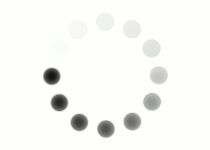As smoke stacks and factories began springing up along city skylines all over the world, a new hope for a prosperous future started to take hold of the public consciousness. Out of this desire came the Early Modern movement, which focused on experimental and highly functional designs. Early Modern designs were often used in propaganda posters and advertisements, and their goal was to make a strong, clear impression. The success of manufactures and retailers created a need for designs that could sell products and compete against their competition. The fields of advertising and marketing were born from this new need.
Designs had to be bold and straightforward to catch the attention of the public and sell products. The influence of businesses on design created a focus on simple arrangements and standard layout that could be used to help lower costs and boost profits.
The union between businesses and designers helped create the Early Modern style, but also lead to its diminished influence. Designers became comfortable with working alongside industry and government, and graphic art became more about doing a job than innovation and creation. Designers soon started looking for ways to bring art and style back into their creations.



